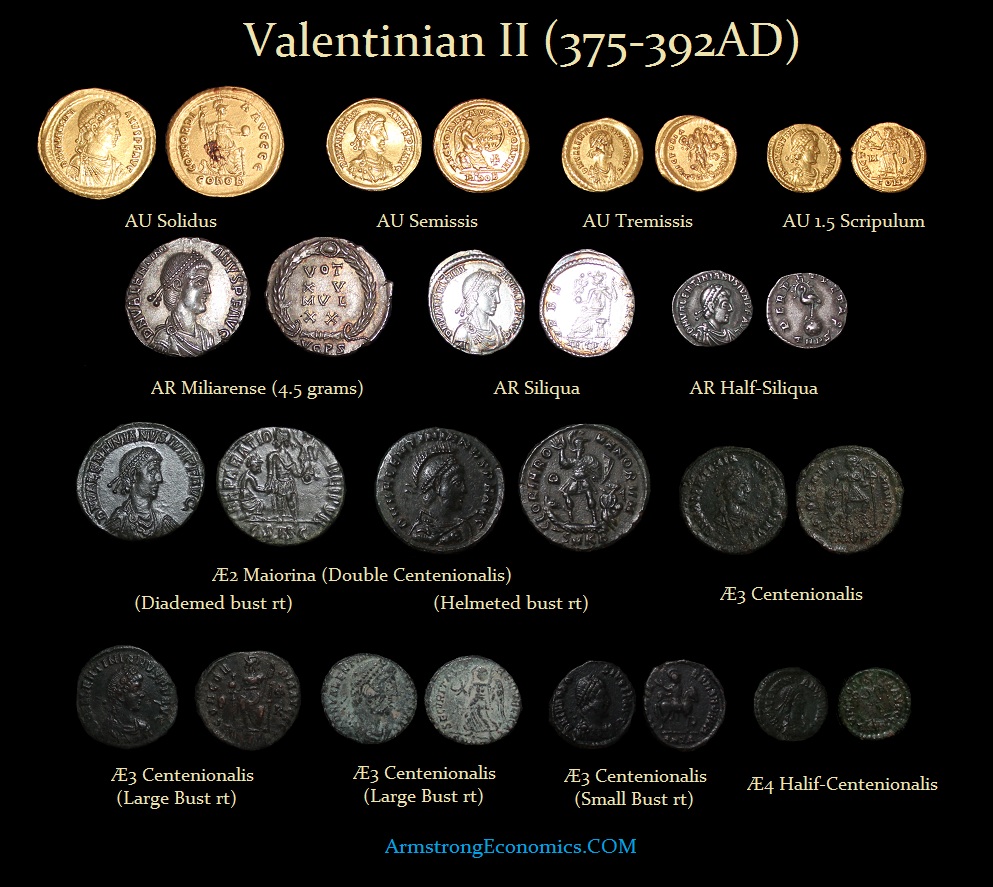Valentinian II
375-392 AD
Emperor in the West
Younger son of Valentinian I
Flavius Valentinianus II was the younger son of the Emperor Valentinian I. He was born at Trier by his father’s second wife Justina, widow of the usurper Magnentius, thus making him the half-brother of Gratian. Valentinian II was proclaimed Emperor by the troops five days after his father’s death in November, 375. Gratian had hoped to rule alone but accepted the elevation of his younger brother since this had been conducted by the powerful Danubian legions.
Following the defeat and death of the Eastern Emperor Valens in 378 AD, Gratian elevated Theodosius I to the throne of the East – not his younger brother Valentinian II. This may not have been mere family rivalry since Theodosius was a competent general and a good administrator, whereas Valentinian II showed little skill for either task.
In 383 AD, Gratian fell to the usurper Magnus Maximus and was executed. Valentinian II was left with only Italy. The entire rest of the Western Empire was in the hands of Maximus. In 387AD, Maximus invaded Italy and this is when Valentinian II fled the West and went to Theodosius in the East.
Valentinian II came under the protection of Theodosius and Magnus, and according to a treaty with Theodosius, was to allow Valentinian II to rule in Italy. When Magnus broke the treaty, in 388 AD, Theodosius, with Valentinian II, marched against Maximus in the West with an army composed of barbarians. They met Magnus defeating him and promptly executed him and his son Flavius Victor.
In 392 AD, Valentinian II attempted to take control of his own destiny by replacing his caretaker Arbogast, who had been the real power behind his throne. Valentinian II was mysteriously found dead on May 15, 392 AD. Arbogast then raised a schoolteacher Eugenius to the throne in order to retain his power, which forced Theodosius to march against the West, once again soundly defeating Arbogast and his plans for power.
Monetary System

Silver Miliarense
Mints: Alexandria, Antioch, Arelate, Aquileia, Constantinople, Cyzicus, Heraclea, Lugdunum, Milan, Nicomedia, Rome, Siscia, Sirmium, Thessalonica
Obverse Legends:
D N VALENTINIANVS P F AVG
D N VALENTINIANVS IVN P F AVG
DENOMINATIONS
AU Solidus (4.50 grams)
AU Semissis (2.25 grams) – possibly unique
AU 1½ Scripulum (1.65 grams)
AU Tremissis (1.45 grams)
AR 3 Miliarense (13.50 grams)
AR Miliarense (4.50 grams)
AR 1½ Siliqua (3.45 grams)
AR Reduced Siliqua (2.25 grams)
AR ¾ Siliqua (1.70 grams)
AR ½ Siliqua (1.12 grams)
AE1(restored follis)
AE2
AE3
AE4






